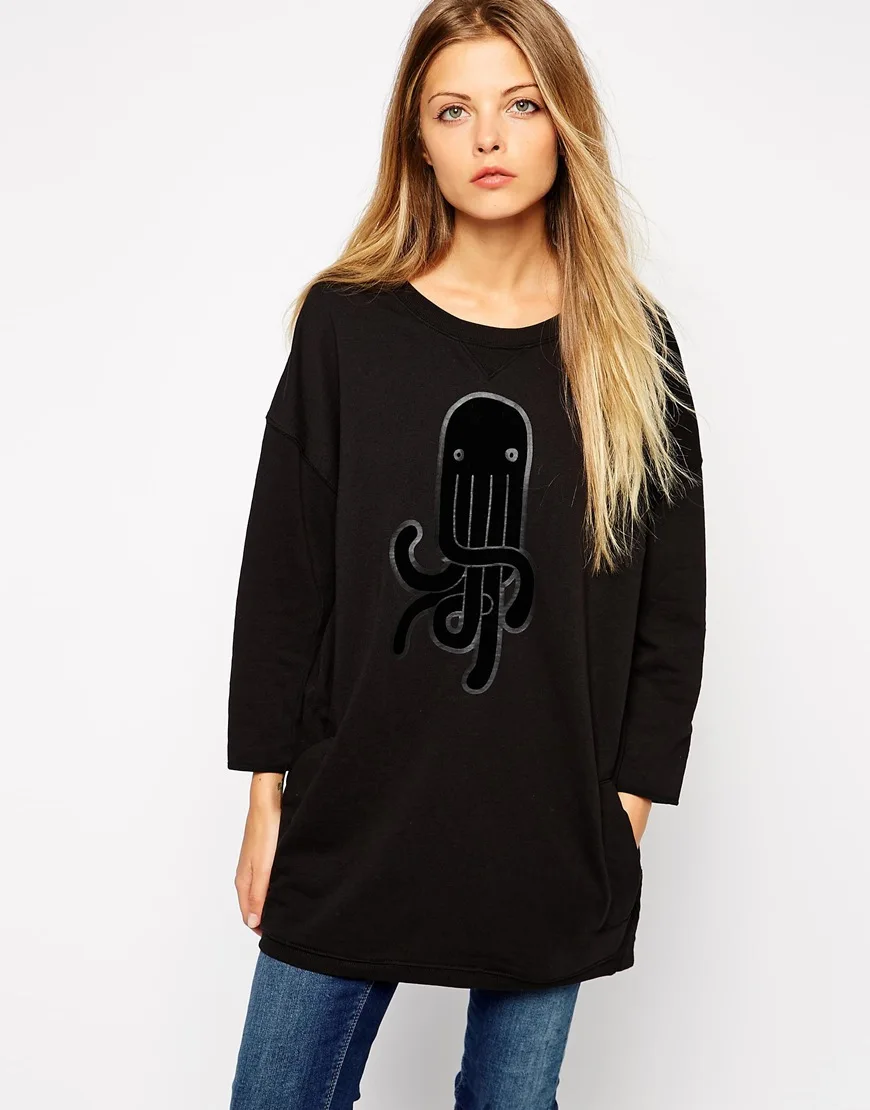Things to Consider When Deciding on the correct Sweatshirt

Sweatshirts are long-sleeved, pullover tops that are made of thick cotton cloth. They are generally worn as casual clothing and aren't as dressy as sweater s or cardigans. They might not come with the Hood. If you're interested in purchasing a sweatshirt, here are some tips:
The appeal of Norma Kamali was spread by the use of sweatshirts
Since the end of the 70s In the late '70s, Norma Kamali has been transforming the simple sweatshirt into an art. Her designs are now an essential part of all women's wardrobes. Her distinct styles vary from a tummy-tucking crew neckline to leather-paneled sweatshirts. She also has created clothes in unusual shapes, such as an oversized tank top that has an extended trumpet skirt.
The collaboration between the designer and sweatshirt manufacturer Everlast led to her Timeless collection, which was an instant hit when it was featured in the spring catalog of Spiegel. The collection was made up of interchangeable and convertible knits with classic designs, and many pieces were priced under $20. Even if The Norma Kamali Timeless collection wasn't sold in stores, buyers were able to find the designs on eBay and Poshmark.
Merino wool sweatshirts are more comfortable than sweatshirt s made of soft wool.
Merino wool is known for its moisture-wicking capabilities which help to keep you dry and comfortable. Merino wool is an organic fiber and also offers a more comfortable feel. It also drys quickly compared to other natural substances. Additionally, merino is a sustainable resource. sweat shirts shed coats each year and grow new coats.

Merino's weight-to-heat ratio is high, and the warmth of wool is one of the reasons it's popular for sweatshirts. It assists in regulating the body's temperature because of its natural loft, which holds heat in the fibers. This is why Merino wool sweatshirts work great for summer and outdoor activities like hiking, mountain biking, and running. The warmth they provide keeps the wearer well-hydrated and cool, something that is important when working out.
Zip-front hoodies feature kangaroo pockets.
Kangaroo pocket hoodies are a popular style of hoodies. They feature a big pocket at the front that keeps your hands warm on cold days. They're additionally more practical than conventional pockets as they allow the hands to slide in and out with ease.
Kangaroo pockets are typically large enough to fit a wallet or some other small personal items. They're usually long enough to fit a small hand or even sufficient to hold two hands. They have wide openings on both sides and are ideal for carrying small objects.
French Terry fabric is a very popular material for sweatshirts
The French terry fabric is made of soft yarns that are made into loops, and are typically medium-weight. It is also known as a fabric that wicks away moisture and is pre-shrunk. French Terry is a fantastic option for sweatshirts as it is warm when you're in need and keeps you cool when you're trying to cool down.
French Terry is also a popular choice for casual wear, as it is stretchy enough and has enough flexibility to feel good when you touch your body. It also allows for enough air to circulate throughout the fabric, which makes it ideal for layering underneath other clothes. Additionally, since it is lighter than other sweatshirts, you can wear it all through the year without feeling either cold or hot.
Hoodies can be classist.
While it could appear that hoodies are simply clothes that are appropriate for people of the working class but the truth is that they carry classist connotations. Hoodies first became seen in the 1970s in New York, where graffiti artists would wear them to conceal their identities. In 1976 the hoodies made their big appearance in the film "Rocky," when the protagonist of the film was a working class man in gray sweats that were hooded during his memorable climb up the Philadelphia Museum of Art.
Hoodies are frequently associated with destruction, death and other unpleasant things, and yet they can also be used for practical reasons. For instance, monks and priests can wear hoods to demonstrate respect and a sense of self-control.
